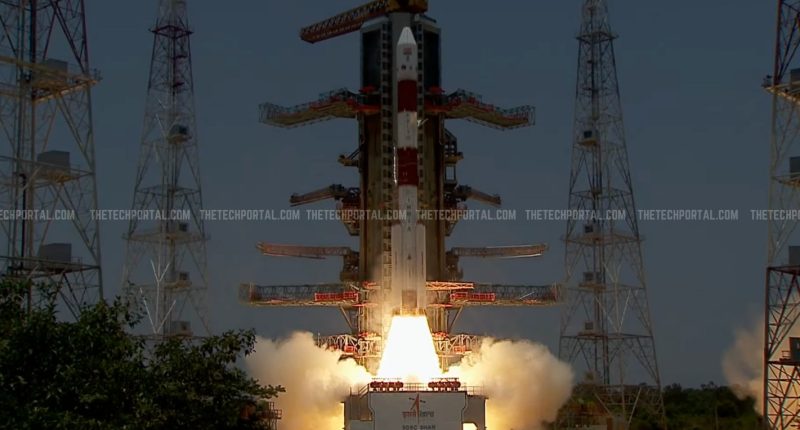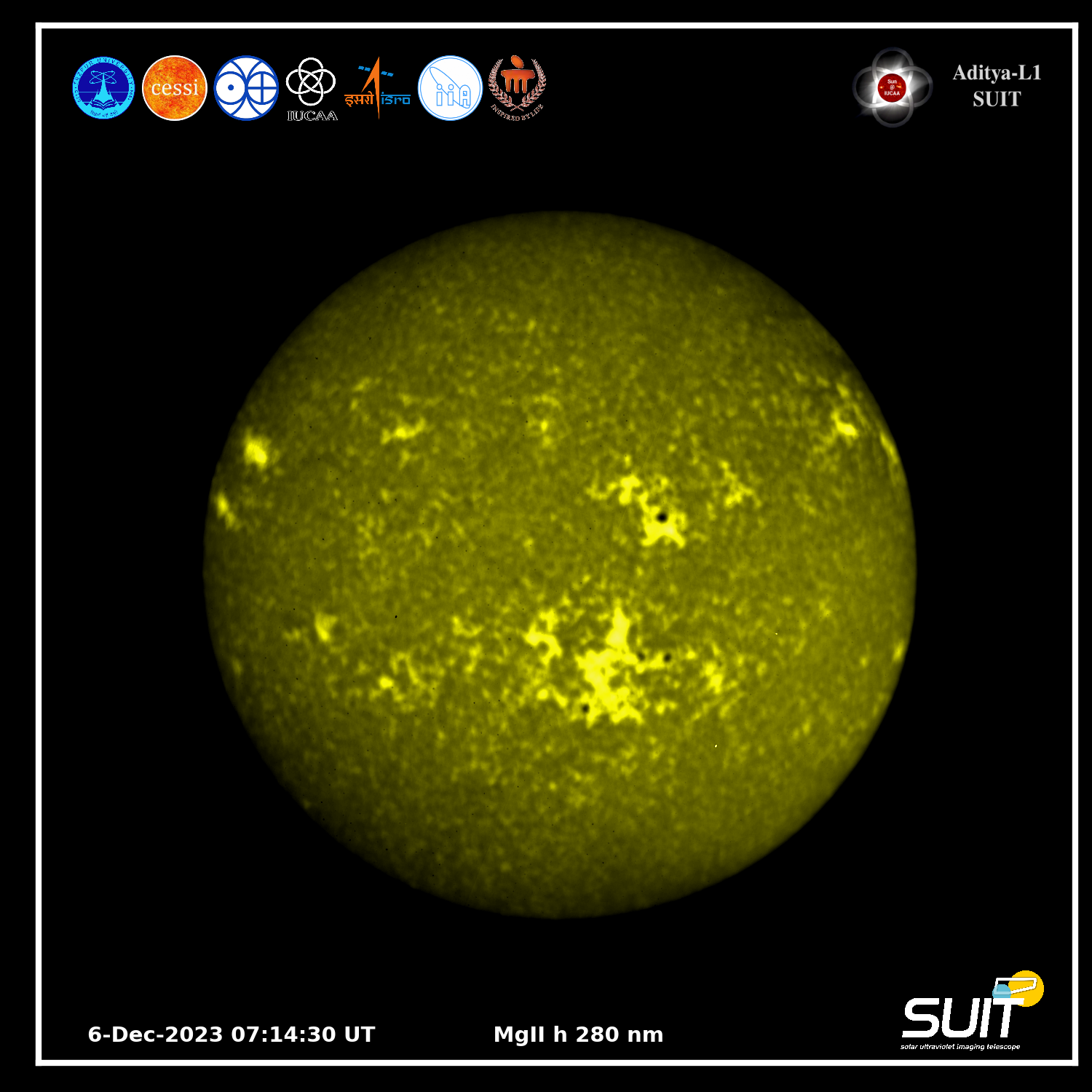Three months ago, India’s maiden solar mission – Aditya L-1 – achieved a successful liftoff, and a month later, escaped the planet’s gravitational pull. Now, ISRO reports that the mission has successfully captured the first-ever full-disk images of the Sun in near ultraviolet wavelengths. At the time of its launch, Aditya L-1 had taken to the skies with seven distinct payloads from the Satish Dhawan Space Centre in Sriharikota. Following a meticulous pre-commissioning phase, the telescope achieved a significant milestone on December 6, 2023, by capturing its first light science images.
The Solar Ultraviolet Imaging Telescope (SUIT) instrument, a focal component of ISRO’s Aditya-L1 mission, has emerged as a technological marvel by capturing comprehensive full-disk images of the Sun. Operating in near-ultraviolet wavelengths ranging from 200 to 400 nm, SUIT provides scientists with an unprecedented view of the Sun’s photosphere and chromosphere, fostering deeper insights into its dynamic behavior.
The imagery obtained through SUIT’s lens reveals a tapestry of solar features, including sunspots, plage, and quiet Sun regions. The Mg II h image, in particular, offers scientists a detailed canvas for studying the Sun’s photosphere and chromosphere dynamics, shedding light on phenomena crucial for comprehending space weather and Earth’s climate. Beyond their visual allure, these images hold profound scientific significance. They provide pioneering insights into the dynamic coupling of the magnetized solar atmosphere, a crucial aspect for understanding solar events such as sunspots, flares, and prominences. This knowledge is paramount for deciphering the impact of solar radiation on space weather and the climate of the Earth, as well as answer questions regarding solar atmospheric dynamics and energy transfer mechanisms within the Sun’s layers.
ISRO also announced the development in a post on X, which read “The SUIT payload captures full-disk images of the Sun in near ultraviolet wavelengths. The images include the first-ever full-disk representations of the Sun in wavelengths ranging from 200 to 400 nm. They provide pioneering insights into the intricate details of the Sun’s photosphere and chromosphere.”
Equipped with eleven specialized filters, SUIT enhances the precision of solar imaging by capturing images in various scientific wavelengths. The comprehensive nature of these observations, excluding Ca II h, sets a new standard for solar research, demonstrating the technological prowess embedded in ISRO’s mission. As scientists delve into the trove of data provided by SUIT’s observations, the Aditya-L1 mission lays the groundwork for unraveling longstanding solar mysteries. From dynamic solar events to the Sun’s influence on Earth’s climate, the revelations poised to emerge hold the potential to reshape our understanding of our solar system’s central luminary.
The development of the SUIT itself is the culmination of the collaborative efforts led by the Inter-University Centre for Astronomy and Astrophysics (IUCAA), Pune. Institutions such as ISRO, the Manipal Academy of Higher Education (MAHE), the Centre for Excellence in Space Science Indian (CESSI) at IISER-Kolkata, the Indian Institute of Astrophysics Bengaluru, the Udaipur Solar Observatory (USO-PRL), and Tezpur University Assam played pivotal roles in this collaborative triumph.
The Tech Portal is published by Blue Box Media Private Limited. Our investors have no influence over our reporting. Read our full Ownership and Funding Disclosure →







